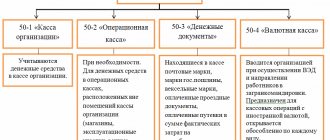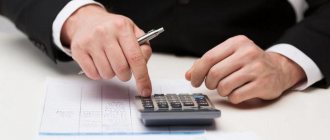What are profitable investments?
The legislation determines that profitable investments in material assets should be considered financing the purchase of objects with a long period of use, which are endowed with a tangible form and are transferred to other entities for use in their economic activities for a certain period of time for a fee established by the contract.
These include, for example:
- Building.
- Facilities.
- Equipment.
- Vehicles, etc.
That is, in essence, these are fixed assets (fixed assets). But they have a main distinguishing feature - these assets are used in activities not by the owner himself, but by those who lease these assets. Thus, income-generating investments represent leased assets.
The company must carry out separate accounting of fixed assets and income-generating investments, since they have a different nature of use by the entity.
The rules of law require that objects acquired and transferred by an organization to another entity under a rental or leasing agreement must still be reflected in the accounting and reporting of the direct owner.
In this case, it does not matter for what funds the property was acquired - from own sources or from borrowed capital.
These objects must be registered at their original cost, which is the sum of the actual costs incurred for their purchase or construction.
Attention! However, like fixed assets, these assets should be reflected in reporting at their residual value, that is, the amount of depreciation accrued during their use is subtracted from the original cost. A separate line 1160 is provided in the balance sheet to reflect information about these objects.
Basic accounting rules
The account is active, so the debit shows the receipt of fixed assets, and the credit shows their disposal. Property recorded on the account is depreciated. 03, to account 02, like any fixed asset.
Analytical accounts for accounts. 03 are opened for each property and each tenant. The object is accepted for accounting in account 03 at its original cost, the rules for determining which are established in PBU 6/01. Final account balance 03 is the cost of the property that has been transferred or will be transferred for use. In the balance sheet it is shown as part of fixed assets at residual value, that is, minus depreciation.
What is taken into account on account 03 of accounting
The current Chart of Accounts provides that income-generating investments must be accounted for separately from fixed assets in a special account 03.
Here you can see the objects that the company receives to generate income from renting them out for temporary use by third parties. These objects have the same cost as an OS and have a useful life of more than one year.
An important characteristic for this kind of objects is also established in the form of the presence of a material form. Thus, intangible assets (intangible assets) cannot be reflected in this account.
Thus, in account 03 it is necessary to take into account the costs of purchasing buildings, structures, equipment, vehicles, inventory, etc.
Attention! In addition, on this account it is necessary to show objects that are transferred to other counterparties under a leasing agreement, in cases where the material value is listed on the lessor’s balance sheet. If, according to the provisions of the concluded agreement, such property is included in the balance sheet of the lessee, then off-balance sheet account 011 is used to reflect such funds.
You might be interested in:
Accounting account 76 - in what case is it used, characteristics, postings
Why does a company need account 03?
When an ordinary citizen is engaged in hoarding, he can store money in different ways. Some people place them in a bank at interest, others store them under their pillows at home, but the smartest and most practical people buy real estate. The latter option obviously involves making a profit from savings. Firstly, real estate has always been and will be valued, and secondly, an apartment or office can be rented out.
Enterprises have a similar situation. Account 03 is necessary to accumulate funds invested in valuable material objects. For example, a company set aside part of its profits and purchased a commercial building. Since the property is not yet suitable for its needs, the building is transferred for temporary use, that is, rented out. As a result, the total cost of the building appears on the balance sheet of account 03: the company has made profitable investments and receives natural profit from them.
The choice of this account is determined by the fact that in the vast majority of cases it is fixed assets that are leased.
Characteristics of account 03 – “Profitable investments in material assets”
As indicated in the Chart of Accounts, account 03 is active. The debit balance of such an account reflects the presence at the beginning of the period of certain profitable investments in assets. The debit of the account reflects the receipt of objects, and the credit reflects their disposal.
The balance at the end of the period is calculated by adding the balance of profitable investments at the beginning of the period with the turnover on the debit of the account, and subtracting the turnover on the credit of this account from the resulting amount.
Analytics for the account under consideration is built by type of objects of profitable investment in assets, by tenants and lessees, and also by separately accounted assets.
In addition, a sub-account can be created on this account, which can be used to account for the disposal of objects reflected as profitable investments in tangible assets.
The debit of this subaccount must reflect the cost of the retiring material asset, and the credit - the amount of accumulated depreciation for this object. After this, this sub-account is closed, and the result obtained is applied either to other income or to other expenses of the company.
Attention! However, a business entity has the right not to use it, but to determine the financial result from the disposal of such an object directly on account 91. The chosen method must be fixed in the company’s Accounting Policy.
An example of accounting for investments in material assets and the order of reflection in the balance sheet
Let's look at the situation using an example:
Fantasia LLC (works for OSN, produces food products) bought the building in November 2020 in order to rent it out. The transaction price is 18 million rubles. (including VAT RUB 2,745,762.71). Plus, the company paid the real estate company for assistance in choosing a building and processing documents RUB 131,865.37. (including VAT RUB 20,115.06). In the same month, the company registered ownership of the property and paid a fee of 12,000 rubles. The commissioning of the property was carried out in November 2020. In December of the same year, Fantasia leased the building to IP Skvortsov. In the accounting, the accountant of Fantasia LLC made the following entries:
- Dt 08 Kt 60 in the amount of RUB 15,254,236.29. — the purchase price of the building is reflected minus VAT;
- Dt 19 Kt 60 in the amount of RUB 2,745,763.71. — VAT on the building is reflected;
- Dt 08 Kt 60 in the amount of RUB 111,750.31. — expenses for realtor services are reflected;
- Dt 19 Kt 60 in the amount of 20,115.06 rubles. — VAT on realtor services is reflected;
- Dt 08 Kt 68 in the amount of 12,000 rubles. — state duty for registering the building has been charged;
- Dt 03 accounts - Profitable investments in material assets for rent - Kt 08 in the amount of 15,377,986.60 rubles. — reflects the initial cost of the building.
- Dt 03 accounts - Income-earning investments in material assets leased out, analytics of IP Skvortsov Kt 03 accounts - Income-earning investments in material assets for rent - 15,377,986.60 rubles. — the building was leased to IP Skvortsov.
To calculate depreciation for the building, the accountant of Fantasia LLC determined the useful life of the property in accordance with the “Classification of fixed assets included in depreciation groups” (Resolution of the Government of the Russian Federation dated January 1, 2002 No. 1). This kind of real estate belongs to the 9th group, the useful life is 30 years. The depreciation method is linear. Then the amount of monthly depreciation for the building will be 15,377,986.60 rubles. / 360 months = 42,716.63 rub. In accounting, the accountant will reflect depreciation for December 2020 as follows:
- Dt 91.2 Kt 02 “Depreciation of profitable investments in material assets” in the amount of 42,716.63 rubles. — depreciation is taken into account as part of the company’s expenses.
Income-generating investments in tangible assets are displayed in the balance sheet at their residual value on line 1160. The residual value is determined by reducing the initial value of the asset (debit balance of account 03 - Income-earning investments in tangible assets) by the amount of depreciation taken into account in expenses (credit balance of account 02 for these assets) . In the example conditions, the value of the building's valuation, which should be displayed in Form 1 as of December 31, 2016, will be RUB 15,335,269.37. (15,337,986 – 42,716.63 rubles).
For information on how to fill out a balance sheet, read the article “Procedure for drawing up a balance sheet (example)” .
Specifics of profitable investments in real estate
Real estate is a special kind of property. According to the law, it is necessary to register ownership with the issuance of an appropriate certificate.
In this regard, accountants sometimes have a question: in what period of time to transfer the value of an object from account 08 to account 03 - before receiving the certificate, or after that.
There is one more feature associated with real estate objects. The law obliges to calculate and transfer property taxes to the budget. This must be done for the first time on the 1st day of the month, which follows the month of its acceptance for registration in the business entity.
PBU 6/01 establishes the rule that an object begins to be accounted for in account 01 or 03 from the moment it fully meets the criteria of a fixed asset. At the same time, this document does not say a word about the need to wait for official paper from a government agency - a certificate. The Ministry of Finance and the Federal Tax Service adhere to the same position in their letters.
Attention! At the same time, it is recommended that the organization itself does not have any confusion - which object has already received state registration and which has not, and that they be taken into account in different sub-accounts. For example, within the group, open two sub-accounts - “Objects that have passed state registration” and “Objects awaiting state registration”.
Off-balance sheet account 006
Off-balance sheet accounts are designed to account for various property that is in the company temporarily, in storage or on a rental basis, for example. A feature of accounting on these accounts is the absence of a double entry method, that is, there will be no correspondence in the Dt or Kt account. Analytical accounting is maintained in registers developed by the company independently and reflected in the accounting policies.
By the way, you can find out what’s new in the accounting policy for the next year here.
To account for strict reporting forms, the current chart of accounts provides for account 006. It is off-balance sheet, that is, its balance will not be affected in any way by the balance sheet currency, however, this account will not allow you to forget about some material assets in the company.
We invite you to familiarize yourself with: Postings for the purchase of personal protective equipment at the expense of the social insurance fund
The debit of this account records the receipt of forms in the conditional valuation, and the credit indicates the expense. It is assumed that records are kept in the context of the name of each form and where they are stored. Thus, if your company has a separate division, then you will have 2 storage locations in this account. The company sets the conditional valuation (for example, 1 ruble) independently.
The requirements for maintaining off-balance sheet accounts are almost the same as for balance sheet accounts. You can find out about the inventory of such accounts in our article “Is it possible to carry out an inventory for an off-balance sheet account?”
You can read about off-balance sheet accounting in general here.
Let's look at accounting for strict reporting forms using an example.
How to evaluate profitable investments
When assessing income-generating investments, the same rules are used as for fixed assets.
You might be interested in:
Account 62 “Settlements with buyers and customers” in accounting: what is reflected, account characteristics, accounting entries
Initially, the value of such an asset is collected from its direct value, reduced by the amount of taxes, as well as all related expenses.
The latter may include:
- Transportation costs;
- Costs of engaging third-party specialists (for example, appraisers);
- Travel and fuel expenses, if they were associated with the acquisition of this object;
- Mandatory deductions, customs payments and state duties;
- Cost of materials used;
- etc.
Thus, all costs associated with the purchased object are collected in account 08. This is done until it is ready to be rented out or leased to generate income. After completion of all necessary work, the accumulated costs for the facility are transferred in one amount to account 03.
Attention! The state duty, if it was paid before the cost was transferred to account 03, can also be included in the costs of the object. Otherwise, it should be taken into account in account 91.
The concept of strict reporting forms
Strict reporting forms are paper documents that some organizations issue instead of sales and cash receipts to confirm the acceptance of money from the population.
There are many types of forms, and examples include railway tickets, theater tickets, receipts for shoe repairs, etc. At the moment, the use of strict reporting forms (abbreviated as BSO) is possible when providing any services, even those not listed in OKUN .
https://www.youtube.com/watch?v=ytabouten-GB
Organizations using such documents must keep strict records of them, since BSOs are a form of reporting to the tax authorities.
Which accounts does account 03 correspond to?
From the debit of account 03, postings can be made to the following accounts:
- 08—acceptance of acquired property for accounting as an income-generating investment;
- 76 - the value of the property for rent is being clarified due to a previously made mistake;
- 80 - property for rent was received from the participant as a contribution to the authorized capital.
On the credit of account 03, debit correspondence entries can be made with the following accounts:
- — transfer of property from the category of profitable investments to fixed assets;
- — write-off of depreciation of a retiring income investment;
- 76 - compensation for part of the cost of a profitable investment through insurance due to its damage;
- 80 - property was transferred to the founders upon their withdrawal from the company;
- 91 - the value of property is written off upon disposal or sale;
- 94 - the shortage of income-generating property is reflected;
- 99 - write-off of the value of an income-generating investment as a result of its loss due to an emergency.
Results
Assets intended for rental are recorded by the company in account 03 - Income-generating investments in tangible assets.
In the account - Income-generating investments in tangible assets - property is accounted for according to rules similar to those for accounting for assets in account 01: before putting it into operation, you need to take into account all costs related to the property, and subsequently calculate depreciation. You can find more complete information on the topic in ConsultantPlus. Full and free access to the system for 2 days.
Accounting entries for account 03
The postings that are made with account 03 are in many ways similar to those made for fixed assets.
| Debit | Credit | Operation description |
| Acquisition of property | ||
| Property purchased for further rental | ||
| 19 | 60 | VAT is deducted from the sales amount |
| 68 | 19 | VAT credited |
| 03/1 | 08 | The acquired property is accounted for as an income-generating investment. |
| Renting, leasing | ||
| 03/2 | 03/1 | Transfer of property for rent or leasing |
| 02 | Depreciation has been calculated | |
| 03/1 | 03/2 | Return of property previously leased, leasing |
| Disposal of property | ||
| 03/Disposal | 03/1 | The value of the property is written off |
| 02 | 03/Disposal | Accrued depreciation on retiring assets was written off |
| 91 | Property sold | |
| 91 | 68 | VAT accrued on the sale of property |
| 91 | 03/Disposal | Residual value written off as expenses |
An example of accounting for a retiring profitable asset
The company “Vygoda DV” LLC, in addition to other fixed assets, owned several real estate properties that were acquired with the purpose of renting them out under a lease agreement to other legal entities. It was decided to sell one of the apartment buildings, which was listed on the balance sheet as a profitable investment in material assets. The sale price of the house was 8 million 550 thousand rubles (incl. VAT 970 thousand rubles) . As of the date of sale, the balance sheet contained information about accumulated depreciation charges in the amount of 1 million 300 thousand rubles . The company at one time bought this property at a price of 7 million 125 thousand rubles . When disposing of an asset, the company's accountant will make the following accounting entries:
| Operation | Amount (rubles) | DEBIT | CREDIT |
| Accounts receivable reflected | 8 550 000 | 76 | 91.1 |
| VAT accrued for payment | 970 000 | 91.2 | 68 |
| The original (accounting) cost of the object has been written off | 7 125 000 | 03 (disposal) | 03 |
| Accumulated depreciation written off | 1 300 000 | 02 | 03 (disposal) |
| The residual value of the object has been written off | 5 825 000 | 91.2 | 03 (disposal) |
Repayment of accounts receivable by the acquirer in the amount of 8,550,000 rubles under Dt 51 Kt 76
Accounting for capital investments: applicable accounts in accounting
According to the chart of accounts (Order of the Ministry of Finance of Russia dated October 31, 2000 No. 94n), an account is used to reflect information on capital expenditures on objects that will subsequently be accepted for accounting as fixed assets. 08 “Investments in non-current assets”. It is on it that all expenses incurred are collected, forming the initial cost of our asset. This account has several subaccounts for detailed accounting of costs incurred.
Comprehensive information about the account. 08 you will find in our publications:
- “08 accounting account (nuances)”;
- “On which line should account balance 08 be reflected in the balance sheet?”
According to clause 8 of PBU 6/01, the initial cost of purchased fixed assets is formed by the total costs of their acquisition, creation and construction (less VAT and other refundable taxes). In this case, accounting is carried out object by object.
The accounting entry in this case looks like this:
Dt 08 Kt 60.
The rules for forming the initial cost of an asset manufactured by a company independently are given in clause 26 of the guidelines for accounting of fixed assets (Order of the Ministry of Finance of Russia dated October 13, 2003 No. 91n). According to the rules, the initial cost of an asset is the actual cost of producing it.
IMPORTANT! The procedure for accounting and forming capital expenditures for the production of fixed assets must correspond to the procedure that is determined for accounting for the costs of the corresponding types of products produced by the company.
The accounting entry for independently created assets will look like this:
Dt 08 Kt 10, 02, 07, 10, 23, 26, 60, 69, 70, 71, 76…
The creation (reconstruction, modernization) of an asset may be associated with the acquisition of equipment that requires its installation, or equipment that cannot be operated without prior installation (classic examples are equipment mounted on a foundation, connecting individual parts of a production line, etc.). Acceptance of such objects for accounting is reflected in the account. 07:
Dt 07 Kt 15, 23, 60, 71, 75, 76, 79, 86, 91.
As property is transferred for installation, it is transferred from the account. 07 on account 08:
Dt 08 Kt 07.
The process of creating a new facility (or reconstructing an existing one) can be very lengthy. This is due, in particular, to the phased method of accepting work, the long-term implementation of trial operation, which is carried out until the planned design parameters are achieved, and many other specific objective factors that take place in construction.
All this may require very large capital expenditures, which can only be accomplished with the help of borrowed funds. Interest on them will increase the book value of capital investments in assets:
Dt 07, 08 Kt 66, 67.
IMPORTANT! This rule applies only to those interests that were accrued before the asset was accepted for accounting. After this event, interest is charged to operating expenses (clause 11 of PBU 10/99).
After all capital costs for the facility are fully collected in the account. 08, it is considered ready for use, and its cost is transferred to the account. 01:
Dt 01 Kt 08.
More details about the account. 01 read the material “01 account in accounting (nuances)”.
Capital investment in accounting is a concept that is inextricably linked with long-term investments and the fixed capital of a company. Accounting for capital investments is carried out according to the rules prescribed by PBU 6/01, Order of the Ministry of Finance dated October 13, 2003 No. 91n and the chart of accounts (Order of the Ministry of Finance dated October 31, 2000 No. 94n).
Profitable investments
Cash accounting
Budget classification codes
The list of BCCs is brought into compliance with Order of the Ministry of Finance of the Russian Federation dated March 12, 2015 No. 36n “On amendments to the Instructions on the procedure for applying the budget classification of the Russian Federation, approved by Order of the Ministry of Finance of the Russian Federation dated July 1, 2013 No. 65n.”
Document journal "Bank statements"
In the “Bank Statements” journal, using the “Download” button, you can select a file with data from the bank and load it into the program. In this case, documents are created and posted automatically. Uploaded documents and their results are displayed in the journal.
Document "Payment order"
The document “Payment order” is reflected in the list of payment orders, the transaction log, as well as in the lists of documents for the counterparty and the agreement. You can go to the list of documents for a counterparty or for an agreement from the form of the corresponding directory using the “Documents” hyperlink.
When transferring wages to an employee, in the “Recipient” field of the payment order, you may need to indicate the bank, and not the full name. employee (for example, when transferring funds to the employee’s personal account of a salary project). In this case, you should use the “Recipient” toggle switch. If the “Recipient” toggle switch is set to the “Employee” position, then the employee’s bank account is selected in the “Recipient Account” field.
If the “Recipient” toggle switch is set to the “Bank” position, then an additional field “Recipient Bank” appears. In this case, in the “Recipient Account” field, select the bank account intended for further transfer of funds to employee accounts. Information about the employee’s personal account or his card number is entered in the “Payment purpose” field. The information entered in the “Payment Purpose” is saved and subsequently automatically filled in when processing payment orders for this employee.
Type of operation “Receipts (acts, invoices)”
Type of operation “Recognition of leasing payments in NU”
When performing the regulatory operation “Recognition of leasing payments in the tax accounting system” (as part of the month-end closing), the difference between the leasing payments reflected in the document “Receipts (acts, invoices)” and the accrued depreciation in tax accounting is determined. If the monthly lease payment exceeds the amount of accrued depreciation, the difference is reflected in tax accounting expenses. If the accrued depreciation exceeds the amount of the lease payment, then the depreciation amount is reversed by this difference.










